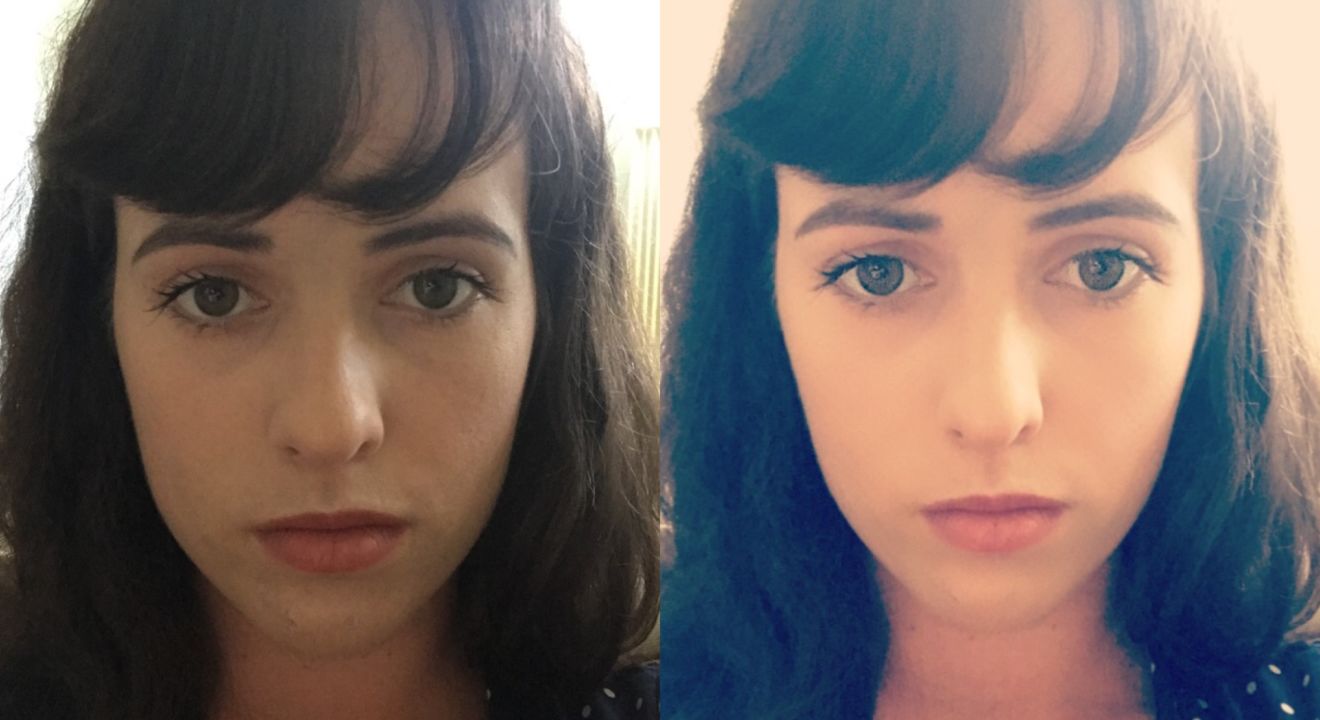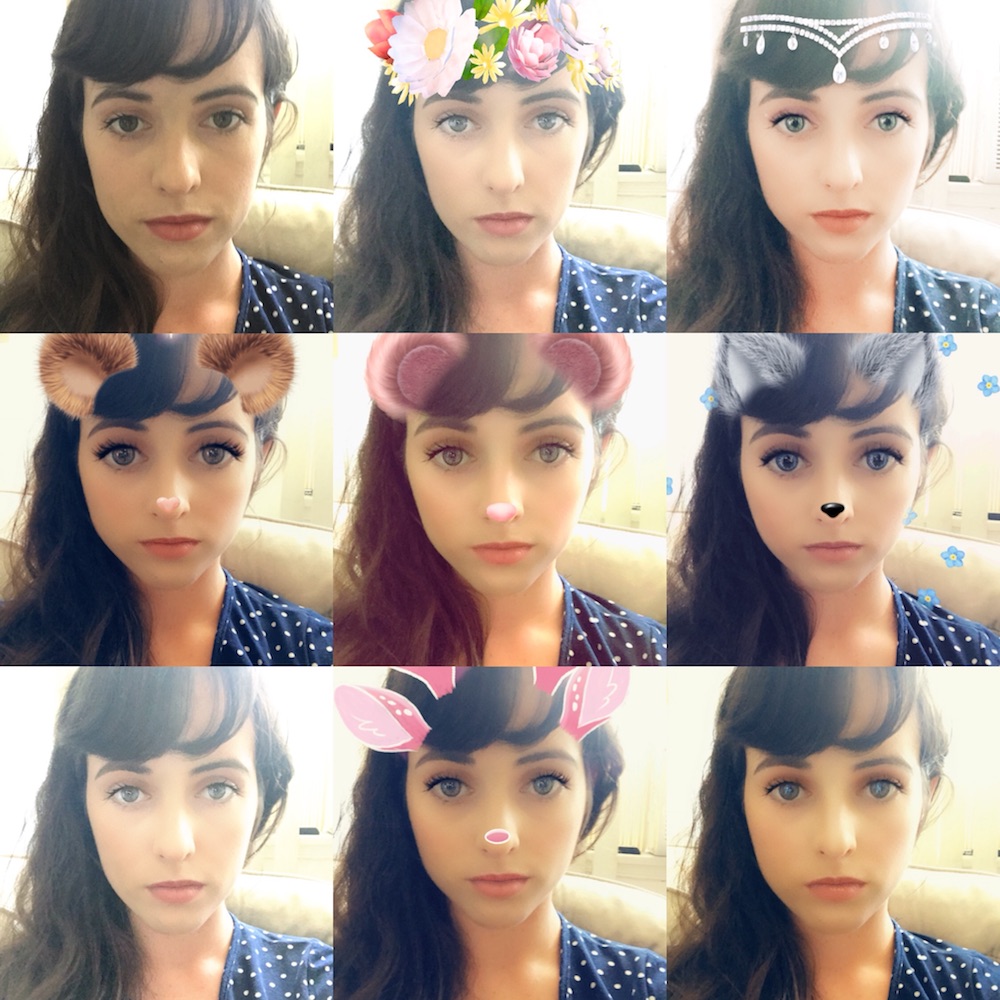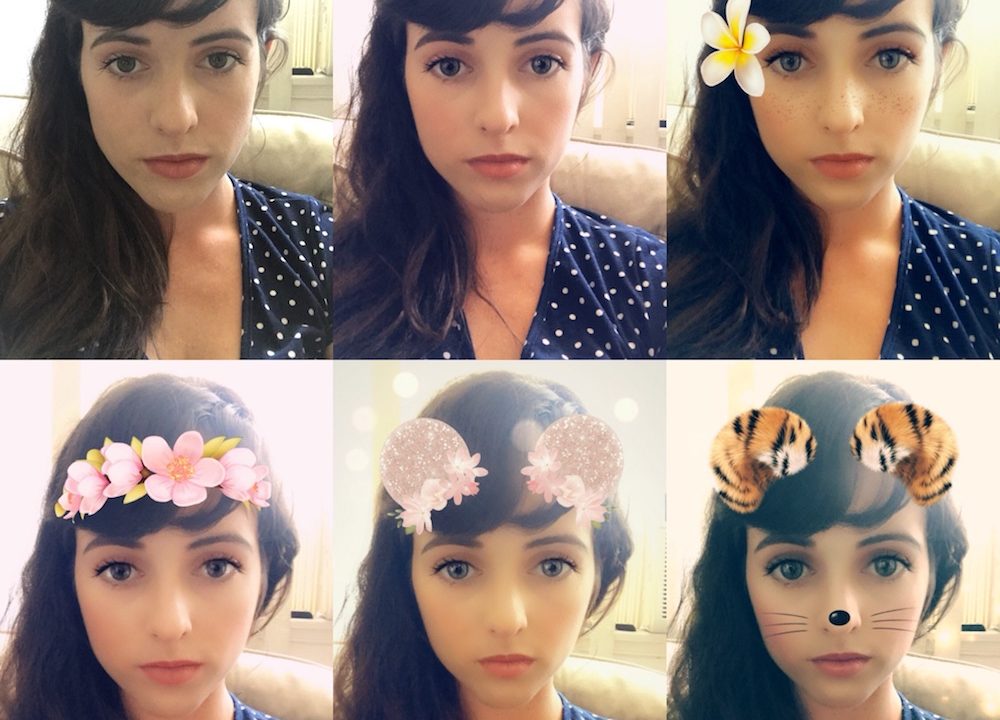Entertainment July 19, 2018
Is there a reason you want everyone to have blue eyes?


Upon hearing size-inclusive model Hunter McGrady’s speech at EntityMag’s Love Yourself Summit, one thing she said in particular kept sticking out in my head:
“We’re living in a generation of Facetune and Photoshop. Now we can literally change the way that we look within minutes on our phones. We can morph our images into ‘perfect’ versions of ourselves, versions that we think people will be more approving of.”
Now, we’ve all heard this in one way or another throughout the years. My first counterargument was, “well there’s a good portion of Snapchat lenses that don’t add cosmetic features to your face…right?”
I knew people asked the question “Is Snapchat healthy?” But I had never really considered it myself. However, it only took a quick perusal around the app to find the truth:
That means 94% of lenses assumed I wanted my facial features morphed or changed for cosmetic purposes, even with silly features like wearing wolf ears or a director’s beret.
Now I know what many will be thinking, “Doesn’t makeup do the same thing? You’re probably wearing makeup in the picture you take with Snapchat anyway.”
And yes, makeup does alter your facial features, and most would assume it’s for cosmetic purposes as well. However, makeup is a choice-based activity. You know exactly where your contour, eye shadow, or mascara is going, and you leave the features alone that you don’t want to alter.
Snapchat does not give you that choice with its lenses, despite having 34 options at your disposal. This is because several of Snapchat’s lenses alter your face in subtle ways you don’t immediately notice. It encourages you to go back and forth between your unaltered photo, notice the differences, and dislike the unaltered version of yourself.
At this point, the answer to the question “is Snapchat healthy” was becoming glaringly clear.


A side-by-side comparison of an unedited photo of myself (left) and a similar photo using the “blue color tone” Snapchat lense. Images via Snapchat and Layout.
I stared at this one for a while trying to figure out the difference. I know the blue tone would make my hair and eyes look more colorful, but I knew something else was different.
Only with these pictures side-by-side could I notice that the width of my mouth had been shortened, my nose had been narrowed, and my eyes had been ever-so-slightly enlarged.
Although this becomes the reason many users like this lens, it does beg this question: would they be uncomfortable sending an unfiltered photo through Snapchat after using this one regularly? Or would they prefer the recipient always see them with an altered nose, altered face shape and altered eye shape…even if they don’t realize that’s what is happening to the photo?
And if they would prefer the edited version, does that mean we have a pretty solid answer to the question “is Snapchat healthy?”


This is a sample of eight Snapchat filters that lightened my eyes along with other cosmetic features (the unfiltered photo is at the top left corner). Images via Snapchat and Layout.
This I found fascinating. One might say, “What’s wrong with wanting to see yourself with different colored eyes? I’d certainly be curious.” Now If Snapchat offered one or two of those options, and the rest kept my eye color the way it is, I’d consider that motive.
But only six filters did not lighten my hazel eyes in an attempt to make them shades of light blue or light green. Those filters are:
The message this sends is clear: darker eyes are un-enhanced eyes. Thus, it also sends the message that darker eyes are less beautiful. So if the question “Is Snapchat healthy” has been making occasional visits to your moral compass, this would be a good piece of evidence to consider.


Just a sample of the 30 Snapchat lenses that increase eye size out of 34 lenses (the unfiltered photo is at the top left corner). Images via Snapchat and Layout.
So if you have 34 Snapchat lenses and almost none of them make your eyes smaller or keep them the way they are, what does that mean?
It means that these lenses are not just for customers wondering “What would my eyes look like in different shapes?” These lenses show specific, Facetune-like patterns that hint at some shady implications about Snapchat’s beauty standards.
For women who have naturally smaller eyes, or women who have naturally darker eyes, or women whose ethnicities cause them to have naturally smaller eyes, darker eyes, or wider mouths, what message is Snapchat sending them?
If Snapchat believes their company represents “the greatest opportunity to improve the way people live and communicate,” then don’t assume light-eyed, thin-mouthed, skinny features is the only way people can go about that communication.